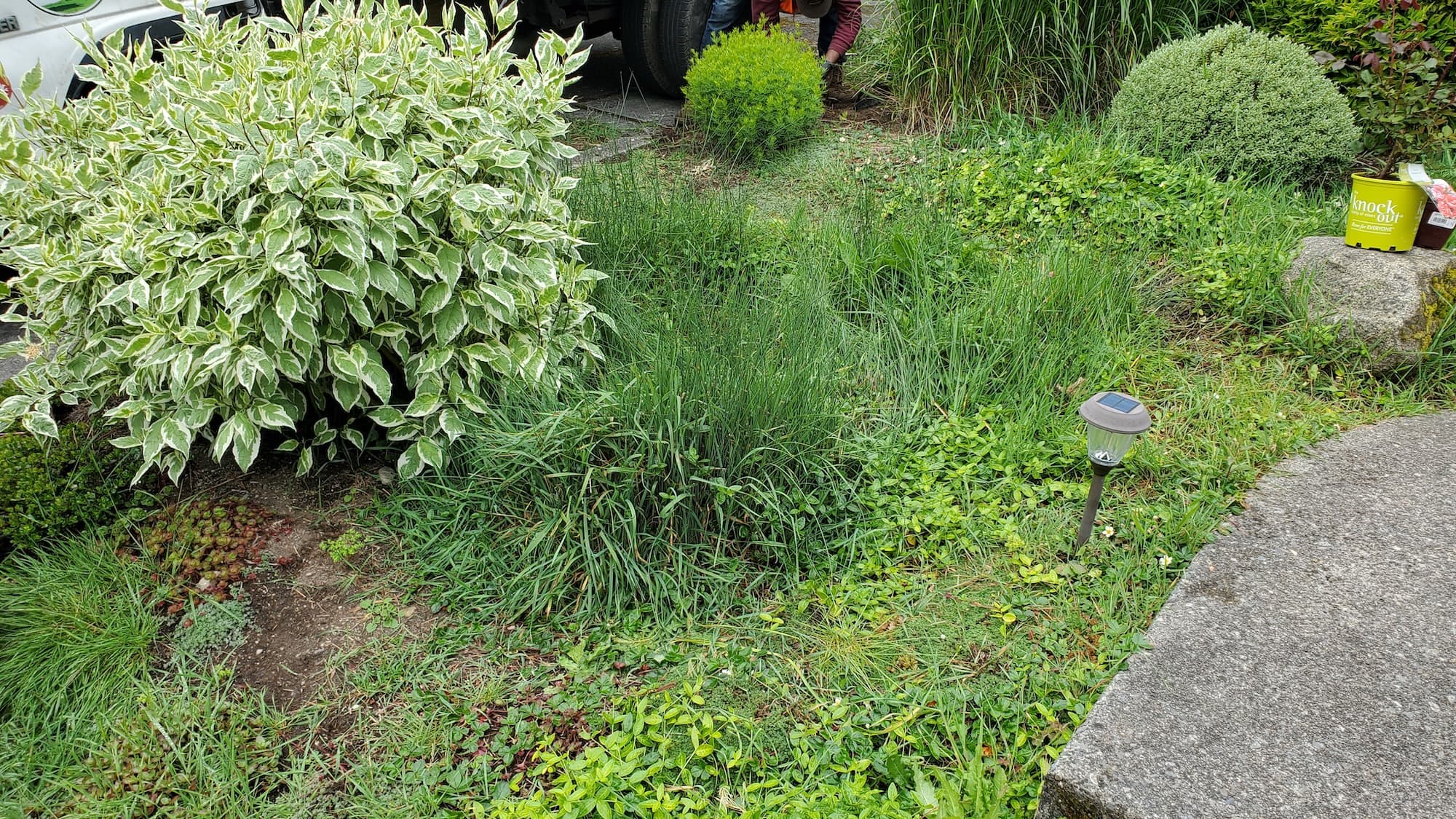West Seattle Replanting after invasive removal
Homeowner’s Issue
West Seattle yards are fighting a few predictable problems: heavy winter rain, compacted glacial‑till soils on older lots, and aggressive invasives like Himalayan blackberry and English ivy that thrive in our shaded pockets. Properties near Alki and Lincoln Park get salt spray and wind stress; inland slopes in Highland Park and Admiral trap water and develop moss in high‑shade areas. Many homes here have mature conifers that cast long shade bands, creating uneven sun exposure—full sun on south faces and deep shade under cedars. That mix encourages patchy lawns, bare soil, and recurring weed flushes come spring.
Drainage is a repeat issue: compacted terraces, clay layers, and failing retaining walls channel water toward foundations or create soggy beds. HOA rules in some Admiral and Fauntleroy developments favor tidy, low‑height plantings, so choices must balance ecology with curb rules. Seattle’s long wet season and short dry spell mean new plantings need good root establishment before July drought windows. Expect persistent re‑sprouts from root crowns unless removal is mechanical and followed by replanting and mulching. We avoid herbicides—only sustainable, physical, and organic methods—so projects require careful staging, proper soil prep, and follow‑up to prevent reinvasion.
Our Quality Service
We replace invasives with resilient natives and vetted non‑invasives suited to West Seattle microclimates. Work includes targeted mechanical removal, root crown excavation where required, soil conditioning, and immediate replanting for erosion control. We use hand tools, wheeled carts, and small excavation when access allows; no broadcast chemicals—only organic, physical control methods. Typical jobs are scheduled for 1–3 days depending on scope; larger sites take 1–2 weeks with staged plantings.
Local insight: we amend heavy, compacted soils with compost and sand to improve drainage in slope areas, and add planting berms or swales where surface runoff is an issue. For shoreline or windy sites near Alki, we favor salt‑tolerant natives. Benefits include safer yards, improved curb appeal, reduced weekly maintenance, and longer‑lasting plantings that handle our rainy winters and summer dry spells.
What’s Included
- Site assessment and invasive mapping.
- Mechanical removal of invasives (hand‑pulling, root removal, cutting).
- Soil testing and amendment recommendation.
- Plant selection and installation (native-first list).
- Mulch application to suppress re-sprouts and conserve moisture.
- Basic post‑planting care instructions and one follow‑up visit (30 days).
Options / upgrades:
- Mulch + landscape fabric (for high weed pressure areas).
- Organic weed control treatments (no herbicides).
- Haul‑away of green waste vs. green‑bin drop‑off.
- Drip irrigation or soaker hose installation for establishment.
- Seasonal color planting or erosion‑control matting for slopes.
Before & After / Expectations
Expect noise, digging, and some exposed soil during the workday. We clean most debris as we go and haul or curbside green‑bin materials per your choice. Complete landscape settling and root establishment take a season; we typically see clear improvement in weed pressure and vigor within 6–12 months.
Care tips for West Seattle:
- Water new installs deeply once weekly during summer (first 8–12 weeks more frequent).
- Mulch 2–3” to reduce moss and weed germination in shaded beds.
- Monitor root crowns of removed shrubs for re‑sprouts in early spring; remove before seed set.
- Avoid planting in late fall on saturated slopes—wait for dryer windows in spring for better establishment.
We practice sustainable, no‑herbicide methods only.
FAQs
Q: How long before the invasives stop coming back?
A: With proper root removal, mulching, and replacement plantings, most sites show major reduction within one season; follow‑up year two reduces regrowth further.Q: Do you use herbicides?
A: No. We use mechanical removal, hand‑pulling, and organic controls only.Q: Will you need access to my driveway or side yard?
A: Yes. Clear 4–8 ft access paths help us move plant stock and materials. We’ll advise on staging during the estimate.Q: When is best to plant in West Seattle?
A: Spring or early fall—spring gives better root establishment before summer dry periods; fall planting is okay if ground isn’t waterlogged.
Call to Action
If you own a West Seattle property and want invasives gone for good with sustainable replanting, book a free estimate. We schedule quickly, provide local expertise for Alki, Lincoln Park, Admiral, and nearby neighborhoods, and run practical, low‑maintenance solutions. Get a clear plan, timeline, and transparent pricing.
Email: neatandtidyseattle@gmail.com
Phone: 206-538-9344
Trusted, local, and straightforward—book a visit and we’ll show you the realistic next steps.










